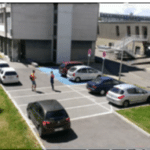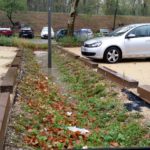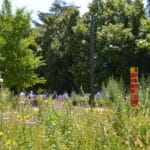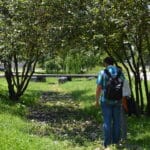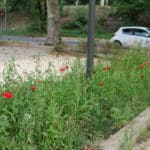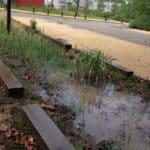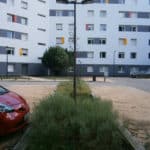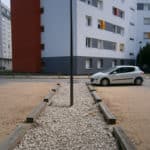
Location
INSA
Lyon | France
Fields of expertise
Runoff pollution
Performance of urban assets
SuDS solution
Digital water solution
Modality of Access
Partially remote
Access offered for each project
10 days
Number of Projects
2 (1 per call)
Expected composition of the visiting user-group
2 researchers during different stages of the project (configuration or deployment of equipment at the beginning of the project, during the experiment or at the end to uninstall or dissemble)

Description
OTHU SuDS will provide to Co-UDlabs users the access to three different SuDS techniques:
- A porous pavement of around 90 m2 with a reservoir structure;
- A 290 m2 infiltration swale;
- An infiltration trench of 240 m2 located at a parking lot catchment.
This facility is being used to analyse in-situ SuDS performance through long term field measurements, using as a basis the data recorded during 4 years in the catchment, including rainfall intensities, inlet and outlet flow rates and water quality (temperature, conductivity and micropollutants such as metals, PAHs, pesticides, alkylphenols, PBDEs loads).
The analyses are also conducted on dissolved and particulate phases in order to evaluate their ability to reach underground or surface water environments.
The measurement of reliable data on flow rates and micropollutants concentration to monitor SuDS activity, without disturbing real operating, will generate a unique long-term dataset in order to assess model performance and develop infiltration models.
Service provision
The three SuDS are part of the field observatory for urban water management (OTHU), and have been designed and monitored in the framework of the Micromegas project granted by the RMC water agency and the French agency Office for Biodiversity (OFB).
Data will be shared with CO- UDlabs consortium and other commercial and academic partners to analyse SuDS performance and develop infiltration models considering water quality.
The facility is also excellent to test new and existing sensors to monitor SuDS or optimize tracing experiments to track preferential flow paths in this type of sustainable solutions.


